Thursday was Superman’s 75 year anniversary. As such, we thought it would be fun to look at story elements popularly associated with Superman which originated in film, television, and radio.

The first appearance of Superman, believed to have gone on sale on or around April 18, 1938.
Superman had real possibilities from day one, debuting in comic books in 1938 and almost immediately crossing over into a daily newspaper comic strip, radio show, and animated theatrical shorts, all within two years time. Cut to the present and Superman has now starred in two live action film serials, five full-length feature films (with a sixth on the way), six television shows (more if you include Justice League shows), a handful of pop music songs, and one Broadway musical which was recently revived.
You know what this means, right? A lot of what we associate with Superman came from somewhere other than the comic books. For example, his “never-ending battle for truth, justice, and the American way” did not start until 1945 as part of the introduction for The Adventures of Superman radio serial. What else?
NOTE: All elements are listed according to the point at which they were first introduced into the Superman mythology.
Daily Planet

The signature globe-shaped logo atop the Daily Planet building, pictured here from Smallville.
The Daily Planet, so named because the planet clearly revolves around the city of Metropolis, is actually only 73 years old. In first two years of the comic, Lois and Clark worked at a newspaper named The Daily Star. The radio show The Adventures of Superman (1940-1951) changed ‘Star’ to ‘Planet’ and it stuck. The comics had to fall in line with the show. This became a trend.
Perry White
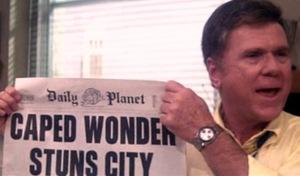
Jackie Cooper, pictured here, played White in all four of the Christopher Reeve Superman movies.
The writers for Adventures of Superman also saw fit to staff the Daily Planet with a couple of new characters, beginning with an Editor-in-Chief of the newspaper and thus Lois and Clark’s boss: Perry White. Like a less flashy, but far earlier version of J. Jonah Jameson from Spiderman, White is now an inseparable part of the Superman mythology. Laurence Fishburne will be taking a turn at a new version of the character in the forthcoming Man of Steel. Prior to the radio show? The comics had Lois and Clark working for an editor named George Taylor.
Jimmy Olsen
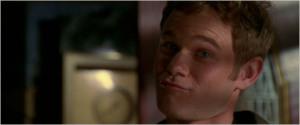
Aaron Ashmore as Jimmy in Smallville. Time for a game of “Which Ashmore twin is this?” This one is…drum roll….the one on Warehouse 13, NOT the one from the X-Men movies.
Lois & Clark had a boss. Now, they needed an underling. So, Adventures of Superman gave us Jimmy Olsen, a young photographer assigned to help Lois and Clark cover stories. There had been an “unnamed inquisitive office boy” in one pre-radio show issue of Action Comics, and he resembled what we now think of as Olsen. However, the radio show gave him a name and personality. The character’s notoriety would increase a decade later when he starred in his own Superman spin-off comic book series entitled Superman’s Pal Jimmy Olsen.
Kryptonite
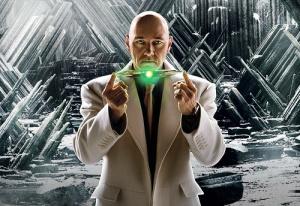
Kevin Spacey as Lex Luthor in Superman Returns, in which Luthor creates an entire continent composed of kryptonite.
It only took two years for the comics to realize, “Holy crap! We created an invincible man without an Achilee’s Heel? What do we do?” So, in 1940, Superman co-creator Jerry Siegel wrote “The K-Metal from Krypton,” in which a strange meteor from the planet Krypton turns Superman into an ordinary man. However, the story’s resolution was dependent upon Clark revealing his secret identity to Lois, which the editor for National Comics (later known as DC Comics) sagely realized was something they’d prefer to string out for a couple more decades. As such, the story was rejected.
George Lowther, the head writer for The Adventures of Superman, came upon a draft of Siegel’s pitch and turned it into “The Meteor from Krypton,” a seven-part story arc on the show in 1943. What Siegel had called K-Metal was now called kryptonite. A possibly apocryphal legend argues the radio show introduced kryptonite as a practical method of providing Superman’s voice actor, Bud Collyer, an occasional vacation. The kryptonite makes Superman deathly ill, thus meaning a fill-in could simply make moaning noises while Collyer was gone.
Kryptonite’s first appearances in the comics did not come until 1949, and in the time since the comic book writers have gone just a wee bit kryptonite crazy. Seriously, it’s bonkers how many types of kryptonite there are now, each with a unique effect upon Superman.
You Will Believe He Can Fly Even if the Comics Didn’t
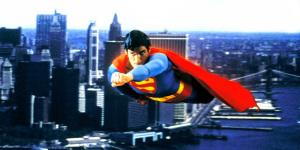
Christopher Reeve flying above the water in Superman.
At first, Superman was just a really fancy jumper, able to ”leap tall buildings in a single bound” and all that. However, this did not translate well to film, a lesson learned by Fleischer Studios as it was animating 9 theatrical shorts between 1940 and 1941. They sought and were eventually granted permission by Detective Comics, Inc. to simply have Superman fly. Leaping? Good. Flying? Infinitely better! The audience agreed and eventually the comics did too.
Below is the standard introduction from one of the Fleischer shorts:
Phantom Zone
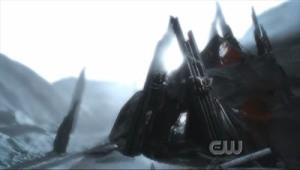
The Phantom Zone as depicted in Smallville.
On Krypton, Jor-El, Superman’s father, ent bad guys to the phantom zone, an alternate dimension prison in which the prisoners do no age nor require sustenance. From within the zone, these prisoners could observe but not interact with our universe. The real purpose of the phantom zone was to provide writers with a work-around to the whole dead planet thing by giving us an entire dimension of evil Kryptonians who survived the destruction of the planet and really don’t like Superman. Introduced in the comics in 1961, the concept closely resembles The Empty Doom, a dimension in which Superman is trapped by Lex Luthor in the 1950 film serial, Atom Man vs Superman.
Random Powers Such as Reversing The Rotation of Planets
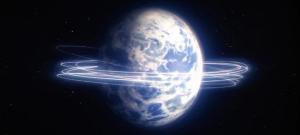
Those aren’t rings around Earth. Nope, that’s just Superman taking a leisurely couple of laps around the planet at the end of Superman.
Ready to get your geek on? Okay. At the end of Superman (1978), Lois dies and Superman tells God to shove it by flying around the Earth so fast the planet’s rotation begins to reverse thus turning back time. This allows him to save Lois at the last second. It’s complete nonsense, but in 1978 it was the definition of awesome (well, that and Grease). The problem? In the comics, Superman can sometimes travel at the speed of light and travel back in time, but he can’t actually reverse the rotation of the Earth. An alien from a dead planet who can fly, breathe ice, and shoot lasers from his eyes spinning the Earth the opposite way if he tries really hard? That’s just crazy.
In truth, the Christopher Reeve Superman films ascribed several powers to him which had no basis in the comics, such as damn near everything he does in the fight with the villains at the end of Superman II. Speaking of which…
The General Zod Trio
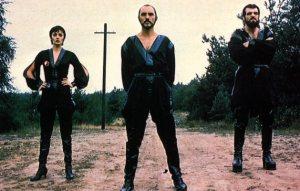
Sarah Douglas, Terence Stamp, and Jack O’Halloran as Ursa, Zod, and Non in Superman II.
“Kneel before Zod! ” With that, and possibly also his adorably mistaking Earth to be named “Planet Houston,” General Zod emerged from Superman II as one of the most iconic villains in Superman history. Prior to the film, the character had been but one of many phantom zone escapees in the comic books. However, Zod travels with an entourage, which consisted of two entirely new characters in the film: Ursa and Non, although Ursa appears to have been modeled after a character named Faora who was only first introduced in the comics in 1977. Interestingly, Michael Shannon will be playing a new version of General Zod in Man of Steel. Also in the film as his right-hand gal? Faora (Antje Traue), technically making her film debut.
Chloe Sullivan, i.e., Teenage Lois Lane

Allison Mack as Chloe in Smallville.
For three seasons of Smallville, I was positive Chloe was Lois Lane. She was the editor of the school newspaper, The Torch, and consistently allowed her journalistic instincts to put her in harm’s way. Plus, she talked like a Joss Whedon (i.e., pop culturally aware) 1940s Gal Friday. Granted, there was nothing in Lois Lane’s history which indicated she was from Smallville and grew up with and harbored a huge crush on Clark Kent. However, everything else lined up. Then those rumors of Chloe simply being Lois Lane’s cousin turned out to be true when Erica Durance showed up as Lois. Chloe was a completely original creation of Smallville, only joining the comic book continuity in 2010.
Lionel Luthor
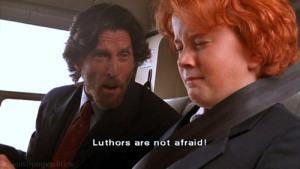
John Glover as Lionel Luthor in Smallville. Argument of the show? Evil dads beget evil, only temporarily conflicted sons.
Lex Luthor had a dad in the comics. The dad wasn’t named Lionel nor did he in appearance and characterization resemble John Glover’s consistent scene-stealer in Smallville. As such, Lionel is almost as complete a unique creation of Smallville’s as Chloe.
Honorable Mention
Clark Kent + Phone Booth = Heroic Change Into Superman costume. That’s just how it is. This association is mostly related to the manner in which the transformation was depicted in the Fleischer cartoons as well as the Christopher Reeve films. However, Superman had used a phone booth as a glorified dressing room in the comics prior to Fleischer, except in the comics the writers played up the obvious comedy of the situation, i.e., it’s a a phone booth is a horribly uncomfortable place to change clothes.
Sources:
Glen Weldon’s, of NPR Pop Culture Happy Hour fame, new Superman book Superman: An Unauthorized Biography. Amazon.com
Brian Cronin’s Was Superman A Spy?: And Other Comic Book Legends Revealed. Amazon.com.

